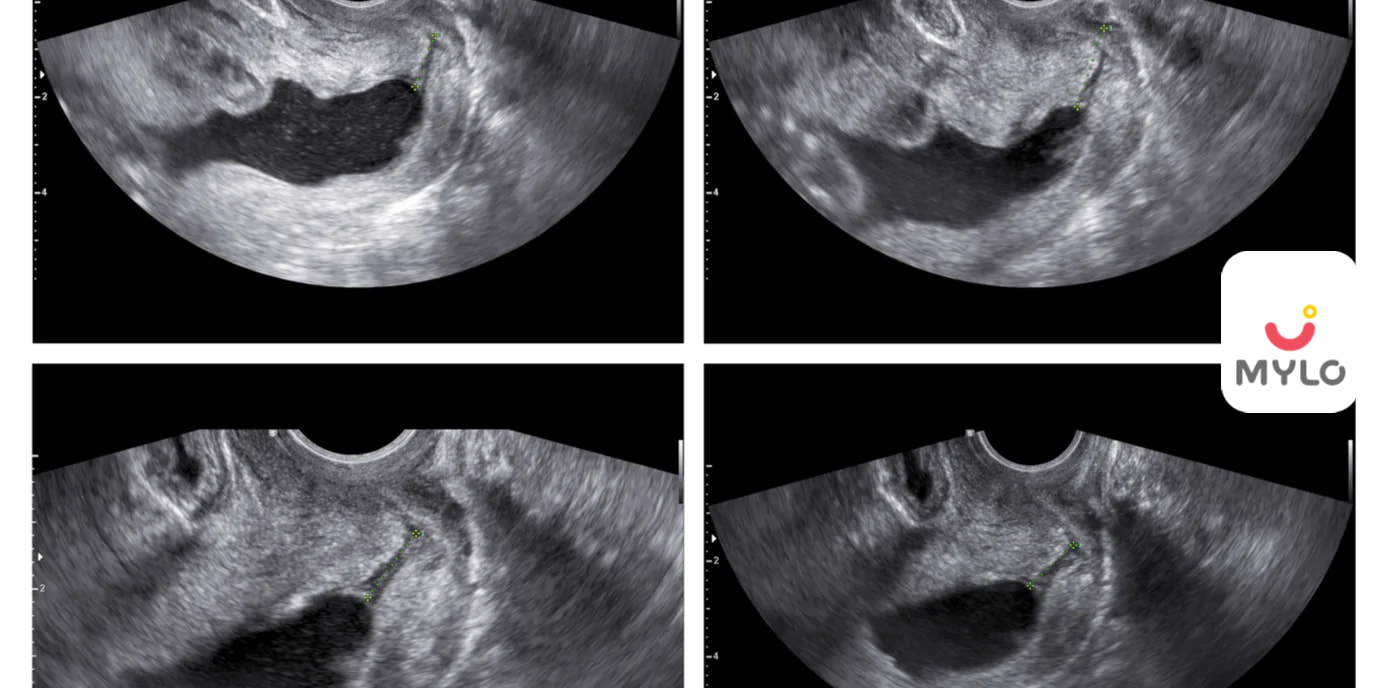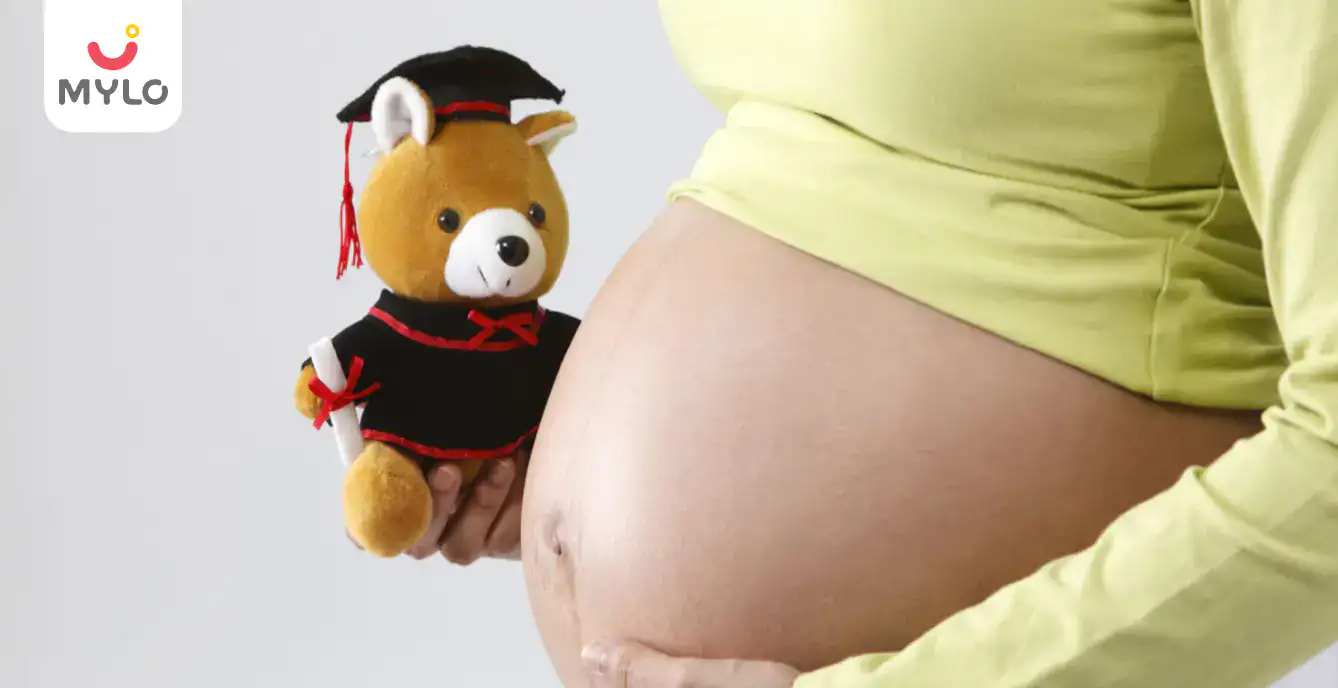Home

Anomaly Scan: The Ultimate Guide for Expecting Parents
In this Article

Anomaly Scan: The Ultimate Guide for Expecting Parents
Updated on 3 November 2023
Beneath the awe and excitement of pregnancy lies an essential milestone for every expectant parent – the anomaly scan. This remarkable window into your baby's world not only offers a glimpse of their growth but also holds the power to provide crucial insights into their health. And as expectant parents, we want nothing more than to ensure the health and well-being of our unborn child.
In this article, we will understand the meaning, importance, timing, procedure and risks of an anomaly scan during pregnancy. We will also explore the anomalies this scan can detect and what to do in such a case. In short, this will be the ultimate guide for expecting parents due for this scan.
What is Anomaly Scan?
An anomaly scan, also known as a mid-pregnancy scan, is a crucial prenatal screening test that assesses the structural development of the fetus. The scan is conducted using ultrasound technology, allowing healthcare professionals to examine the baby's organs, bones, and other anatomical structures in detail.
The primary purpose of an anomaly scan is to identify any potential abnormalities or birth defects in the fetus. By detecting these conditions early on, parents can make informed decisions regarding their baby's health and well-being. It is important to note that an anomaly scan is not a diagnostic test but rather a screening tool that helps identify potential concerns.
You may also like: What Are the Common Tests You Will Have During Your Pregnancy?
When is Anomaly Scan Done?
An anomaly scan is usually conducted between 18 and 22 weeks of pregnancy. This timing is crucial as it allows healthcare professionals to assess the baby's development and identify any potential abnormalities at a stage when most structural features are well-formed and visible on ultrasound. Performing the scan within this time frame maximizes the chances of detecting any anomalies that may be present.
It is essential to schedule the anomaly scan at the right time, as an early scan may not provide a comprehensive view of the baby's development, while a late scan might miss certain abnormalities that are easier to detect during the earlier stages of pregnancy.
What is the Importance of an Anomaly Scan During Pregnancy?
Let us now understand why this scan is considered such an important prenatal test during pregnancy:
1. Early Detection of Birth Defects
Anomaly scans play a crucial role in identifying potential birth defects and abnormalities in the fetus. Detecting these conditions early on allows parents and healthcare professionals to plan for appropriate care and interventions.
2. Opportunity for Further Testing
If an anomaly is detected during the scan, healthcare professionals may recommend additional diagnostic tests to confirm the findings. These tests can help provide a more accurate diagnosis and guide appropriate medical interventions.
3. Informed Decision-Making
The report of anomaly scan can provide expecting parents with valuable information about their baby's health. Armed with this knowledge, parents can make informed decisions regarding their pregnancy, delivery, and postnatal care.
4. Peace of Mind
For many expecting parents, the anxiety surrounding the health and well-being of their baby can be overwhelming. Anomaly scans offer reassurance and peace of mind by providing a comprehensive assessment of the baby's development.
You may also like: NT Scan During Pregnancy - A Comprehensive Guide
What is the Procedure of an Anomaly Scan?
Now that we know when is anomaly scan done, let us understand in detail how this prenatal scan is carried out:
1. Preparation
Before the anomaly scan, the expecting mother may be asked to drink water and have a full bladder. This helps create a clearer ultrasound image.
2. Positioning
The mother lies on her back while the healthcare professional applies a gel on her abdomen. The gel allows for better conduction of sound waves during the scan.
3. Ultrasound Examination
The healthcare professional uses a handheld device called a transducer to emit high-frequency sound waves into the abdomen. These sound waves bounce back, creating an image of the baby's internal structures on a monitor.
4. Assessment of Organs and Structures
The healthcare professional systematically examines the baby's organs, including the brain, heart, spine, limbs, and abdominal organs. They also measure the baby's head circumference, femur length, and abdominal circumference to assess growth.
5. Documentation and Interpretation
The findings from the anomaly scan are documented in a report, which is later interpreted by a radiologist or sonographer. The report provides detailed information about the baby's development and any abnormalities detected.
6. Discussion and Next Steps
After the scan, the healthcare professional discusses the results with the expecting parents, addressing any concerns or questions they may have. If an anomaly is detected, further diagnostic tests or consultations with specialists may be recommended.
You may also like: Double Marker Test in Pregnancy: Need & Importance
How to Interpret the Report of Anomaly Scan?
Interpreting the report of an anomaly scan may seem overwhelming, but understanding the key components can make it easier. The report typically includes:
1. Fetal Measurements
This section provides the measurements of the baby's head circumference, femur length, and abdominal circumference. These measurements help assess the baby's growth and can indicate potential abnormalities if outside the normal range.
2. Organ Assessment
The report will detail the assessment of various organs, including the brain, heart, spine, limbs, and abdominal organs. Each organ is evaluated for any structural abnormalities or developmental concerns.
3. Observations and Findings
This section outlines any specific observations or findings made during the scan. It may include notes on the placenta, amniotic fluid levels, or other relevant factors.
4. Diagnosis or Recommendations
If an anomaly is detected, the report may provide a tentative diagnosis or recommend further diagnostic tests or consultations with specialists. It is important to discuss these findings with the healthcare provider to fully understand the implications and available options.
Remember that the report is not a final diagnosis but rather a tool to guide further investigations or interventions if necessary. It is vital to seek clarification from the healthcare professional if any aspect of the report is unclear.
You may also like: The Scans Required at the End of Second Trimester of Your Pregnancy
Common Anomalies Detected During an Anomaly Scan
An anomaly scan during pregnancy can detect a wide range of anomalies or structural abnormalities in the fetus. Some common anomalies that may be identified include:
-
Cleft Lip or Palate
-
Limb Abnormalities
-
Edward's Syndrome or T18
-
Exomphalos
-
Diaphragmatic Hernia
-
Gastroschisis
-
Serious cardiac abnormalities
-
Patau's Syndrome of T13
-
Lethal Skeletal Dysplasia
-
Bilateral Renal Agenesis
It is important to remember that not all anomalies can be detected during an anomaly scan, and false positives or negatives can occur. Regular prenatal care, including routine check-ups and screenings, is essential for monitoring the baby's development throughout the pregnancy.
You may also like: Fetal Echo Test in Pregnancy: A Diagnostic Tool for Detecting Heart Defects in the Womb
What to Do If an Anomaly is Detected?
Discovering that an anomaly has been detected during an anomaly scan can be an emotional and challenging experience for expecting parents. It is crucial to remember that an anomaly scan is a screening tool and not a definitive diagnosis.
If an anomaly is detected, the following steps are typically taken:
1. Further Diagnostic Tests
Additional diagnostic tests, such as amniocentesis or chorionic villus sampling, may be recommended to confirm the presence of an anomaly and further assess the baby's condition.
2. Consultation with Specialists
Depending on the type of anomaly detected, parents may be referred to specialists, such as genetic counselors, pediatric cardiologists, or maternal-fetal medicine specialists. These consultations can provide more detailed information and help guide further management.
3. Care Planning
Once an anomaly is confirmed, parents can work with their healthcare team to develop a care plan for the baby. This plan may include specialized medical care, interventions, surgeries, or therapies to support the baby's health and development.
4. Preparation for Parenthood
Preparing for the arrival of a baby with a known anomaly requires careful consideration and planning. Parents may need to educate themselves about the specific condition, connect with support networks, and make necessary adjustments to their lifestyles and home environments.
It is important for expecting parents to remember that not all anomalies are life-threatening or debilitating. With the right support and resources, many babies with anomalies can lead fulfilling lives.
What are the Risks of an Anomaly Scan?
While anomaly scans are generally safe, there are a few risks associated with the procedure. These risks are minimal but worth considering:
1. False Positives
Anomaly scans may produce false-positive results, indicating the presence of an anomaly when none is present. This can cause unnecessary stress and anxiety for expecting parents until further diagnostic tests confirm the findings.
2. False Negatives
Similarly, anomaly scans can also produce false-negative results, failing to detect an anomaly that is present. This can lead to a false sense of security and potentially delay necessary interventions or care.
3. Inability to Detect All Anomalies
Anomaly scans have limitations, and not all anomalies can be detected during this procedure. Some conditions may only become apparent later in pregnancy or after birth. Regular prenatal care and additional screenings are essential for comprehensive monitoring.
4. Ultrasound Exposure
Although ultrasound technology is generally considered safe, the long-term effects of repeated ultrasound exposure on the developing fetus are still not fully understood. Healthcare providers follow safety guidelines to minimize exposure and ensure the benefits outweigh the potential risks.
5. Emotional Impact
The possibility of detecting an anomaly during the scan can cause significant emotional distress for expecting parents. It is important to seek appropriate emotional support and counseling to navigate these emotions effectively.
It is crucial to weigh the benefits against the risks and discuss any concerns with the healthcare provider before deciding to undergo an anomaly scan.
You may also like: A Pregnant Woman's Guide To Prenatal Visits
The Bottomline
Anomaly scan is an integral part of prenatal care, providing expecting parents with valuable insights into their baby's development and potential anomalies. By detecting abnormalities early on, parents can make informed decisions and access appropriate medical interventions that can positively impact their baby's health and well-being.
References
1. Jabaz D, Abed M. Sonography 2nd Trimester Assessment, Protocols, and Interpretation. (2023). In: StatPearls [Internet]. Treasure Island (FL): StatPearls Publishing
2. Tekesin I. (2019). The Value of Detailed First-Trimester Ultrasound Anomaly Scan for the Detection of Chromosomal Abnormalities. Ultraschall Med.



Written by
Anupama Chadha
Anupama Chadha, born and raised in Delhi is a content writer who has written extensively for industries such as HR, Healthcare, Finance, Retail and Tech.
Read MoreGet baby's diet chart, and growth tips

RECENTLY PUBLISHED ARTICLES
our most recent articles

Diet & Nutrition
গর্ভাবস্থায় আলুবোখরা: উপকারিতা ও ঝুঁকি | Prunes During Pregnancy: Benefits & Risks in Bengali

Diet & Nutrition
গর্ভাবস্থায় হিং | ঝুঁকি, সুবিধা এবং অন্যান্য চিকিৎসা | Hing During Pregnancy | Risks, Benefits & Other Treatments in Bengali

Women Specific Issues
স্তনের উপর সাদা দাগ: লক্ষণ, কারণ এবং চিকিৎসা | White Spots on Nipple: Causes, Symptoms, and Treatments in Bengali

Diet & Nutrition
গর্ভাবস্থায় পোহা: উপকারিতা, ধরণ এবং রেসিপি | Poha During Pregnancy: Benefits, Types & Recipes in Bengali

Diet & Nutrition
গর্ভাবস্থায় মাছ: উপকারিতা এবং ঝুঁকি | Fish In Pregnancy: Benefits and Risks in Bengali

Diet & Nutrition
গর্ভাবস্থায় রেড ওয়াইন: পার্শ্ব প্রতিক্রিয়া এবং নির্দেশিকা | Red Wine During Pregnancy: Side Effects & Guidelines in Bengali
- ইনার থাই চ্যাফিং: কারণ, উপসর্গ এবং চিকিৎসা | Inner Thigh Chafing: Causes, Symptoms & Treatment in Bengali
- গর্ভাবস্থায় ব্রাউন রাইস: উপকারিতা ও সতর্কতা | Brown Rice During Pregnancy: Benefits & Precautions in Bengali
- Velamentous Cord Insertion - Precautions, Results & Safety
- Unlock the Secret to Flawless Skin: 7 Must-Have Qualities in a Face Serum
- Unlock the Secret to Radiant Skin: How Vitamin C Serum Can Transform Your Complexion
- Gender No Bar: 10 Reasons Why Everyone Needs a Body Lotion
- Unlock the Secret to Radiant Skin How to Choose the Perfect Body Lotion for Your Skin Type
- Top 10 Reasons to Apply a Body Lotion After Every Bath
- Communication in Toddlers: Milestones & Activities
- How to Improve Vocabulary for Toddlers?
- A Comprehensive Guide to Understanding Placenta Accreta
- Vulvovaginitis in Toddlers Causes, Symptoms and Treatment
- A Comprehensive Guide to Understanding Cerebral Palsy in Children
- Bitter Taste in Mouth During Pregnancy: Understanding the Causes and Remedies


AWARDS AND RECOGNITION

Mylo wins Forbes D2C Disruptor award

Mylo wins The Economic Times Promising Brands 2022
AS SEEN IN
















- Mylo Care: Effective and science-backed personal care and wellness solutions for a joyful you.
- Mylo Baby: Science-backed, gentle and effective personal care & hygiene range for your little one.
- Mylo Community: Trusted and empathetic community of 10mn+ parents and experts.
Product Categories
baby carrier | baby soap | baby wipes | stretch marks cream | baby cream | baby shampoo | baby massage oil | baby hair oil | stretch marks oil | baby body wash | baby powder | baby lotion | diaper rash cream | newborn diapers | teether | baby kajal | baby diapers | cloth diapers |








